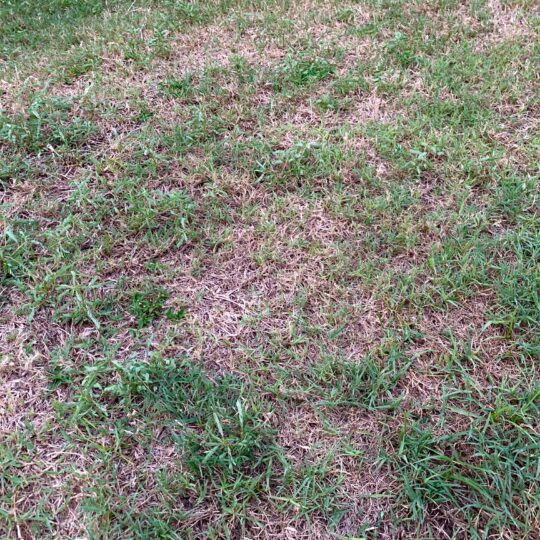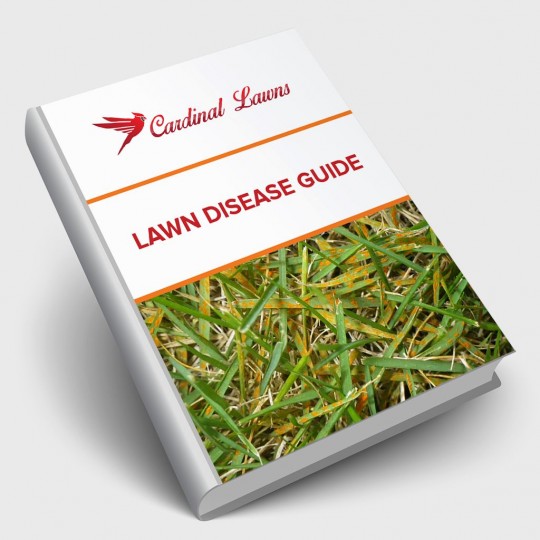9 Common Lawn Diseases
And How to Prevent & Treat Them
Posted
April 21, 2022

You’ve waited all winter for your grass to grow back, but now you’re starting to see signs of stress. You may be dealing with a certain type of common lawn disease. Learn how to identify different diseases and correct the problem before it gets worse.
Common Causes of Lawn Disease
Like all living things, the grass is susceptible to certain diseases. Even if you practice proper lawn maintenance, other natural factors could bring about a fungal problem.
Disease control and correction are easier when you know which disease you’re dealing with. All fungal disease is affected by the same three factors:
- Pathogens
- Weather conditions
- Weak grass
Since you can’t control the weather, you can give your grass a fighting chance by helping it stay strong and evade certain pathogens. Before you can take action against disease, you need to learn how to identify the signs.
Types of Common Lawn Disease
When you’re able to properly diagnose a lawn disease, treating it becomes even easier. While some diseases may have similar symptoms, keep an eye out for these signs to help narrow it down.
Brown Patch
- Causes: During the spring and fall, when humidity, temperatures, and rainfall are high. Also, overfertilizing and wet leaves increase the chances of spreading.
- Signs: Grass blades darken, wilt and die, leaving a circle of sunken grass up to three feet wide.
- Susceptible grass: perennial ryegrass, tall fescue, bentgrass, and Bermudagrass.
Dollar Spot
- Causes: Warm temperatures in late spring through fall. Underfertilizing, excessive moisture, drought stress, and thatch.
- Signs: Silver-dollar-size circles spread up to six inches wide and become large, irregular blocks. Straw-yellow spots have a water-soaked appearance. Morning light reveals cobweb-like growth.
- Susceptible grass: fine fescue, perennial ryegrass, bentgrass, and centipede grass.
Gray Leaf Spot
- Causes: From spring to fall, when temperature and rainfall are high. Poor air circulation, overwatering, overfertilizing, and too much shade.
- Signs: Small, bleached-out spots with dark brown edges. The spots turn gray when wet. These small, irregular patches may join together to form large areas of damage.
- Susceptible grass: perennial ryegrass and tall fescue.
Leaf Spot
- Causes: Unseasonably warm or cool temperatures in overly dry, compacted soil. High humidity, excessive moisture, mowing too short, and overfertilizing.
- Signs: Elongated, oval-shaped spots with dark purple-brown margins and brown centers. Crowns and roots develop dark brown rot, and grasses thin and die out.
- Susceptible grass: tall fescue, perennial ryegrass, and Bermudagrass.
Pythium Lawn Disease
- Causes: Warm temperatures, consistently wet conditions, and high humidity from early summer to fall. Compacted soil, overfertilizing, overwatering, and too much shade.
- Signs: Leaves look greasy and stick together. Roots turn brown and rot. Circles of withering, blackened blades form a pattern that follows the flow of water through the lawn.
- Susceptible grass: perennial ryegrass and bentgrass.
Red Thread
- Causes: Mild, early spring temperatures, and cool, wet conditions. Underfertilizing, high humidity, poor air circulation, too much shade, excess thatch, and compacted soil.
- Signs: Red or bleached-looking patches appear as grass blades wither from the tips. Reddish-pink threads bind blades together; red spores show up on shoes, mowers, and tools.
- Susceptible grasses: fine fescue and perennial ryegrass.
Rust Lawn Disease
- Causes: From early summer through fall when there’s high humidity and drought conditions. Also too much shade and under fertilizing.
- Signs: Irregular patches of thinning grass develop yellow specks that turn rust-colored. This orange-red color also appears on tools, shoes, and mowers.
- Susceptible grasses: perennial ryegrass, tall fescue, Kentucky bluegrass, and Zoysia grass.
Snow Mold
- Causes: Overly cool fall temperatures combined with wet conditions, especially under snow cover. Overfertilizing, poor drainage, and too much shade.
- Signs: Small, circular, pinkish spots spread up to one foot or more. Grass blades look water-soaked and turn reddish-brown then tan. Morning sun reveals white or pinkish fungal threads.
- Susceptible grass: tall and fine fescues.
Summer Patch
- Causes: Unusually high temperatures in late spring through summer. Excessive soil moisture, compacted soil, poor drainage, and mowing too low.
- Signs: Circles of dying and dead tan-colored grass. Dark brown fungal threads may appear.
- Susceptible grass: Kentucky bluegrass and fine fescue.
Preventing & Treating Common Lawn Disease
As you can see from the causes above, many of these lawn diseases are exacerbated by poor conditions, such as compacted soil, poor drainage, and thatch. One of the best ways to help prevent lawn disease or at least keep it from spreading is to properly maintain your lawn. You don’t have to wait for the signs of lawn disease to strike. You can regularly help keep your lawn healthy by doing the following:
- Test your soil and keep pH at the right level for your lawn.
- Mow, fertilize, and water properly.
- Dethatch and aerate.
If you find your lawn still has issues, use the right fungicide formulated to treat the specific disease. If you still need help determining which disease has taken over, contact the specialists at Cardinal Lawns to help diagnose and treat the issue.

Download Your FREE Lawn Disease Guide
Even the most manicured landscapes are susceptible to lawn disease. Take some time to learn about identification and removal before one takes over your lawn. This handy guide teaches you how to spot common lawn diseases as well as how to properly treat them.